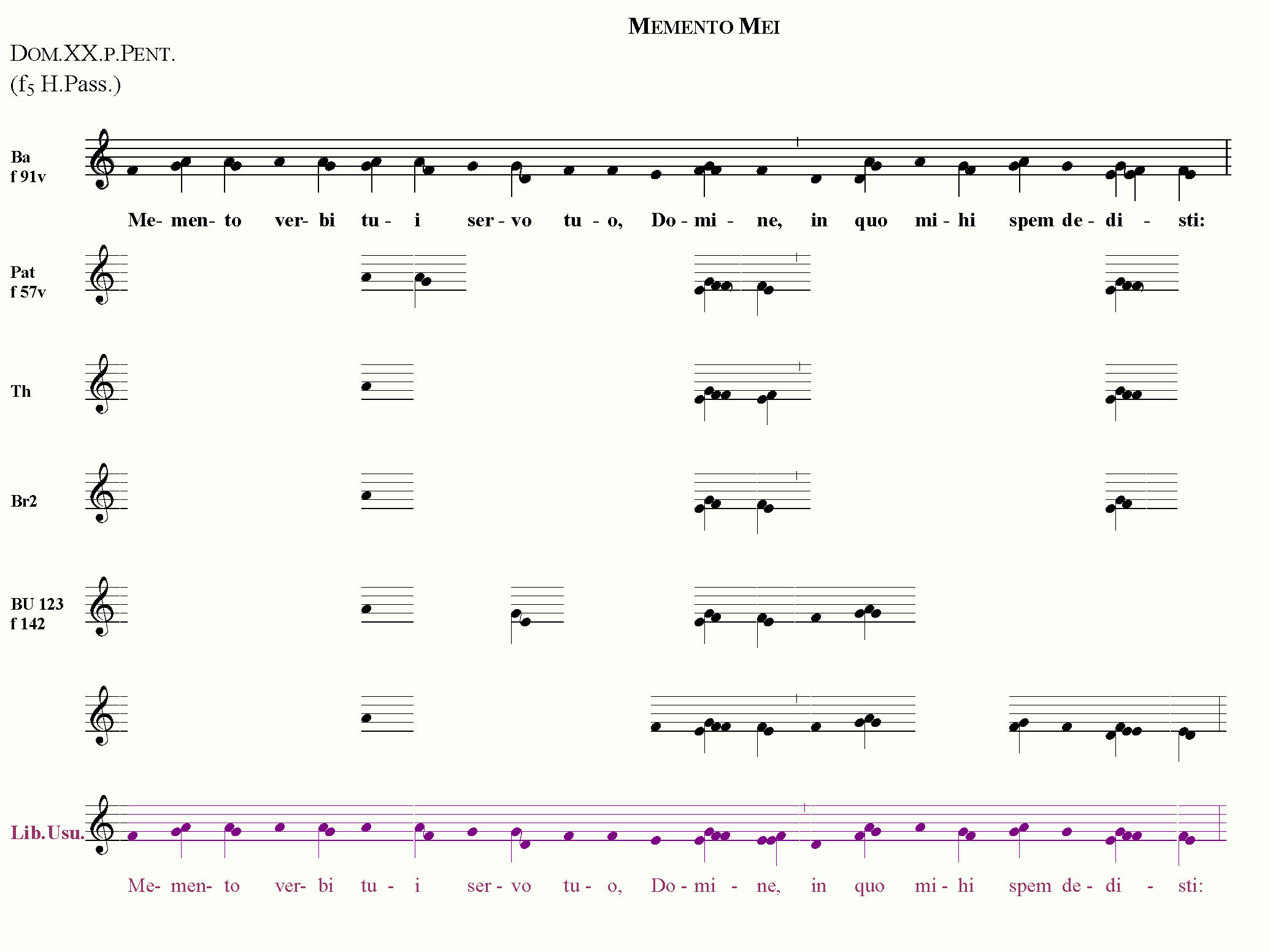Auxiliary library
The basis for the Early Music Department’s auxiliary library was that of the former Melodic History Group, which covered general historical, liturgical and medievalist literature, some basic works on folk music, hymnals, repertories and manuscript catalogues, as well as international specialist research works on Gregorian chant. The direction in which it expanded has been strongly influenced by the narrower research fields of the group members, their chosen projects (such as medieval Hungarian musical sources, office research, graduals, music theory, etc.), and their contacts abroad. The library has recently been augmented by works from the library of Benjamin Rajeczky. However, the book bequest of László Dobszay and the personal library of Janka Szendrei went instead to the Church Music Faculty of the Academy of Music. The size of the auxiliary library rose in 2016 above the “psychologically” remarkable number of 1100 volumes.
Fragment catalogue
The Early Music Department’s Fragment database contains the 12th‒16th (in some cases 17th‒18th) century notated liturgical codices from the medieval Hungary to have survived in fragments. Its basis is a descriptive catalogue of 655 fragments, alongside 131 full sources, issued by Janka Szendrei in 1981. Since then it has almost doubled in size and continues to grow. The descriptions are designed to serve in an up-to-date way the purposes of medieval studies, notably medieval music studies and source research. The basic codex details and palaeographic data for each item ‒ genre, provenance, type of notation, place and time of discovery, whereabouts (collection and registration data), historical and bibliographic features ‒ are noted, along with detailed, accurate melodic and music-palaeographic portrayals. This means (1) giving in detail the liturgical content of each fragment, emphasizing major characteristics important to assigning it to a tradition, (2) identifying and submitting in transcription the melodies and other musical variants for the given region and tradition, and (3) identifying the type of the notation, designating its place among the basic medieval notation types and the Central European varieties of these.
Extra care in structuring the database has been taken with fragments of a single manuscript source or those that could originate from a known codex from Hungary. Among the main aims is to recombine virtually the fragments of collections from various cities and even countries. Such virtual reconstruction is fostered by the integration of the Fragmenta into the similarly intended CANTUS INDEX international database system.
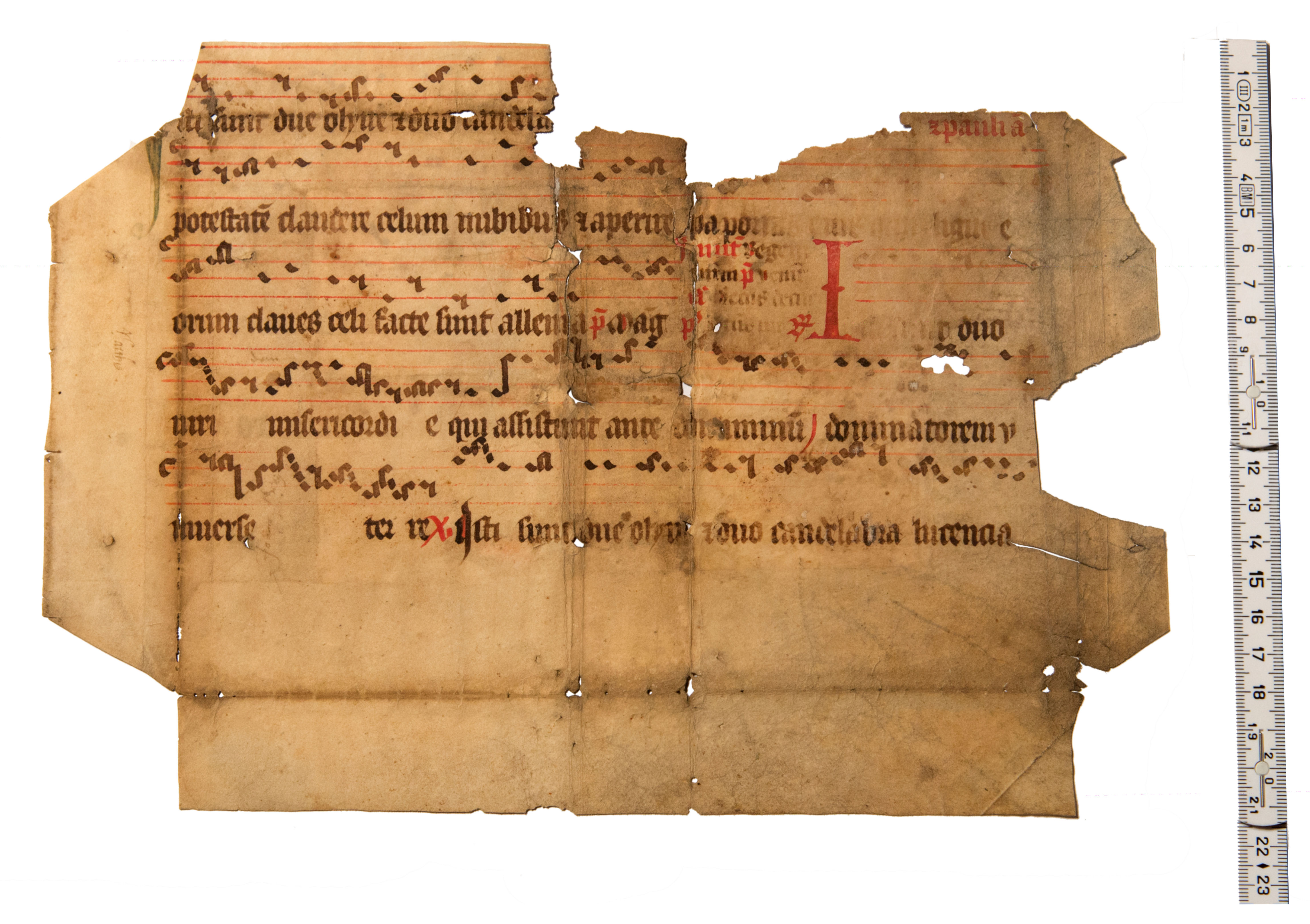
Historical Hymn Collection
- Collecting and transcribing Hungarian religious songs and church hymns that survive in oral practice began concurrently with development of the folk-music typology system used at the Institute for Musicology (1964‒78).
- The aim is to relate the folk-music data to the historical, chant-book data.
- It contains 300 organized types of song on 15,000 record cards.
- The aids employed are indexed in card indexes by text incipits and by location.
- Since 2010 the categorized part of the Corpus can also be found in a computerized database.
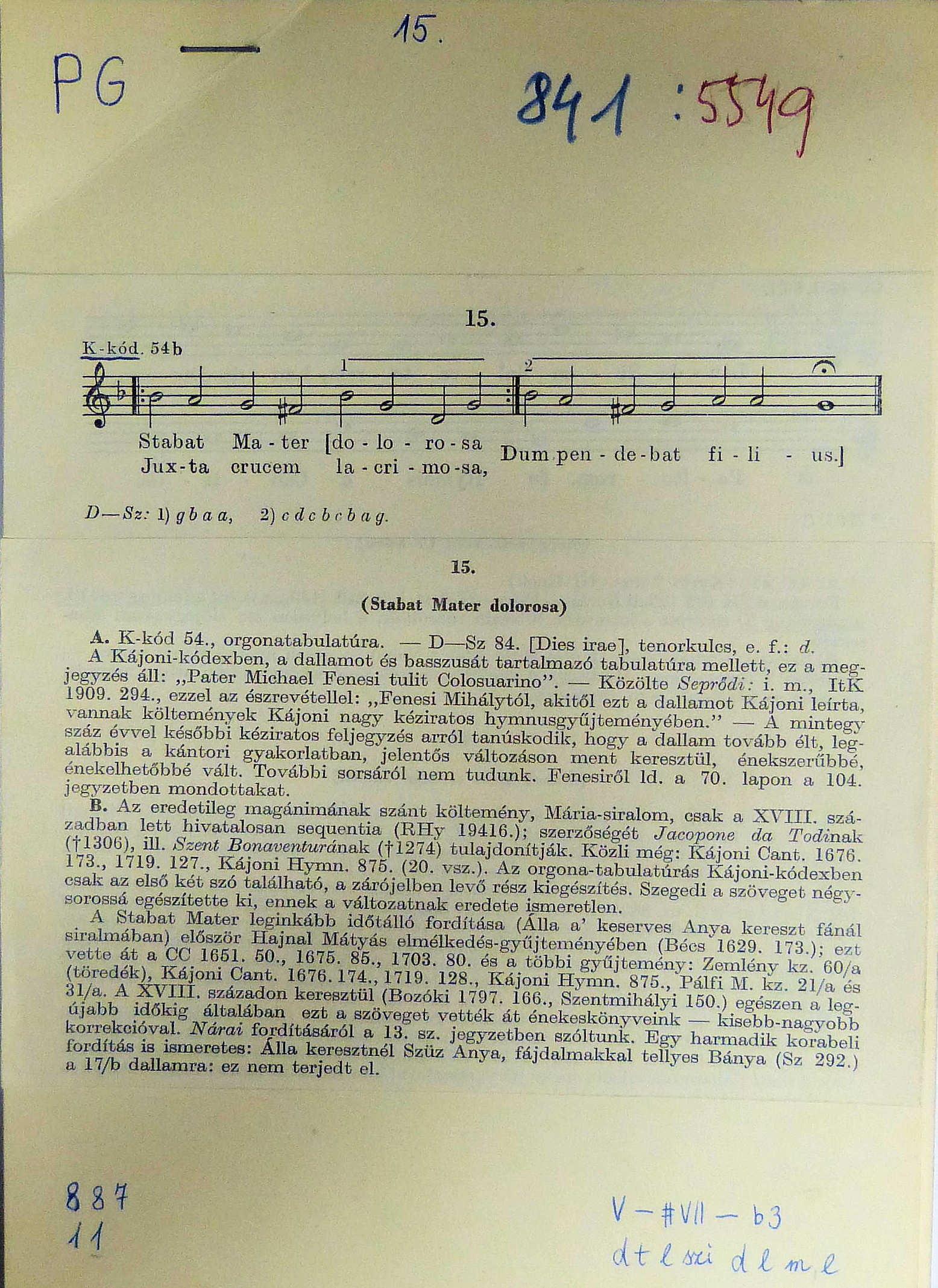
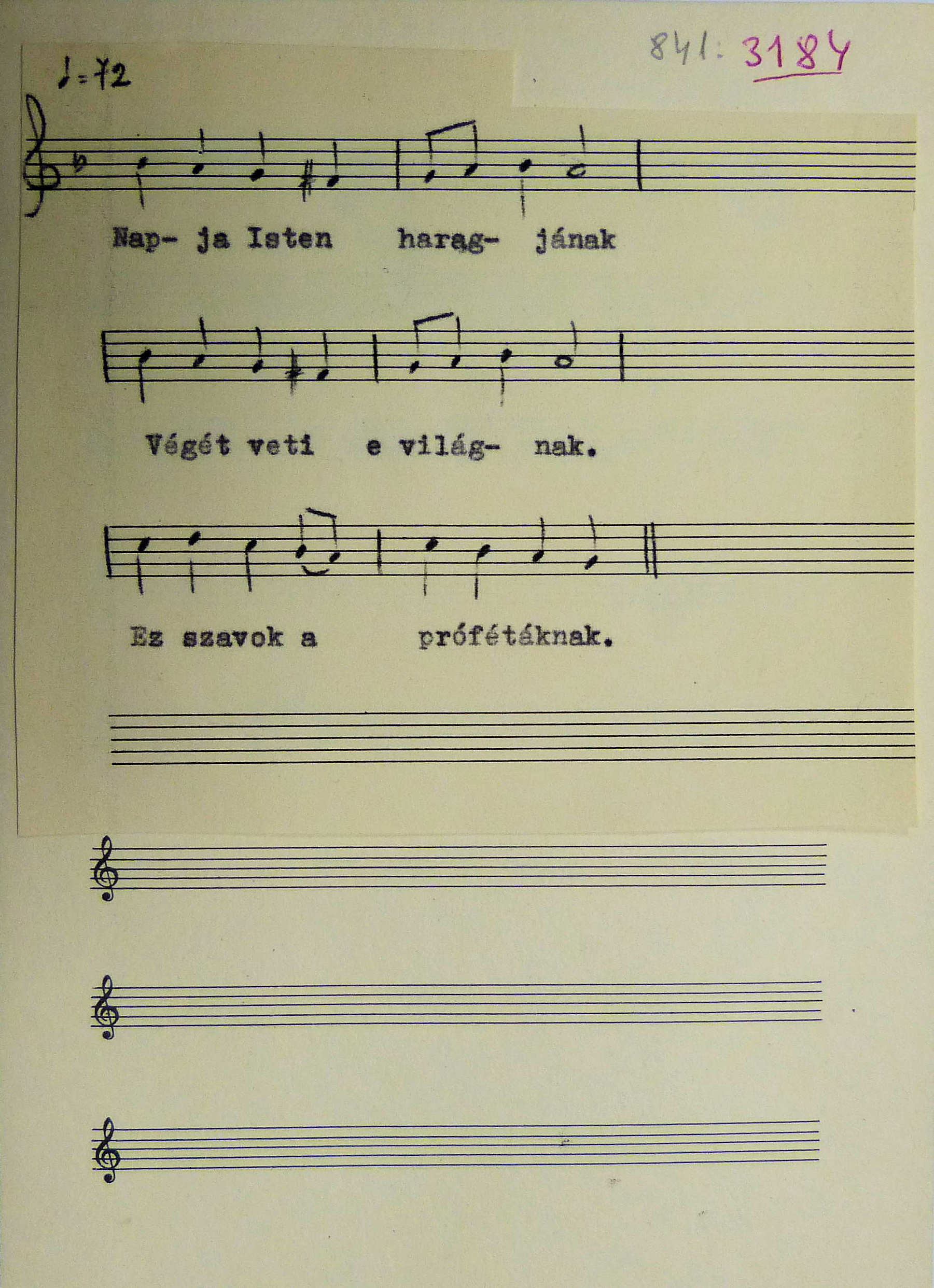
Catalogue and corpus of ordinary chants
- Founded in the 1970s, this project began with transcribing the ordinary chants of three representative graduals from Hungary.
- Expanded from 1993, it continued to transcribe further ordinary sources from Hungary.
- Aims:
- To review the whole Hungarian repertory of ordinary chants and compare them with the European chant corpus in foreign catalogues.
- To compile a more complete corpus of chants from Central Europe by processing Hungarian, Bohemian/Moravian, Austrian and Polish sources.
- It contains the details of over 100 source materials each with over 200 items and transcriptions, amounting to a total of over 2000 chants.
- Presentation of the research findings and publication of the collection in a chant-catalogue form occurred in 2009:
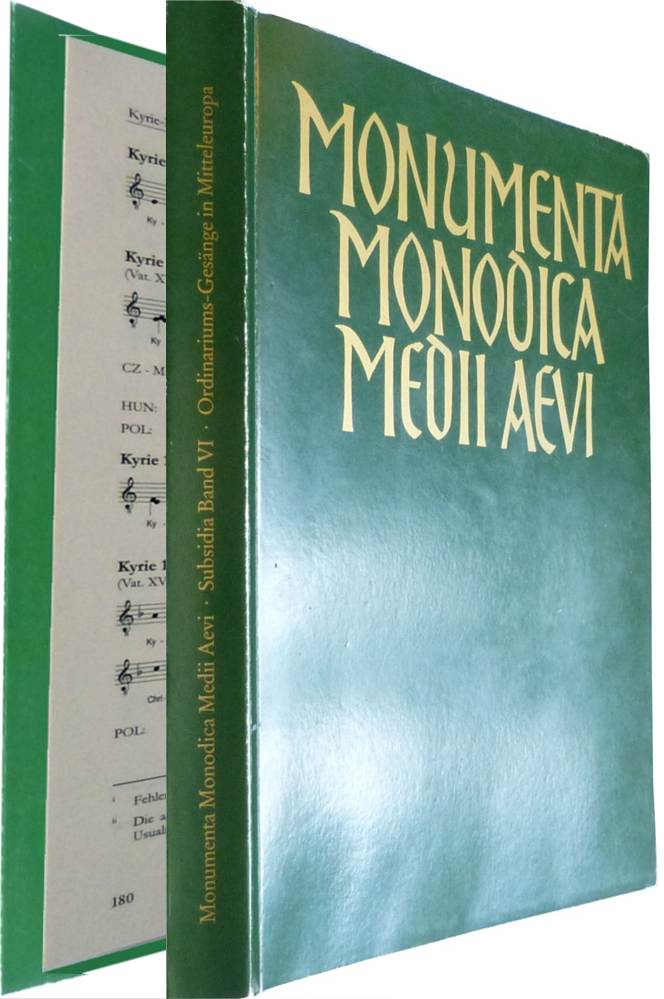
Gábor Kiss, Ordinariums-Gesänge in Mitteleuropa.
Repertoire-Übersicht und Melodienkatalog.
Monumenta Monodica Medii Aevi, Subsidia Band VI
(Kassel–Basel, etc.: Bärenreiter, 2009)
Collection of Gradual chants
 The beginnings were in the 1970s.
The beginnings were in the 1970s.- This concerns the repertory of the proprium of the Mass.
- Its function is to assist in research.
- It takes the form of synoptic handwritten tables for each musical genre – introits, graduals, alleluias, offertories, communion – in alphabetical order.
- It contains all the propers for all the graduals available in Hungary up to 1990, with some foreign sources chosen for comparison.
- The synoptic tables – unlike the responsory collection – show not only the differing sections of the variants but contain copmplete transcriptions of each melody.









